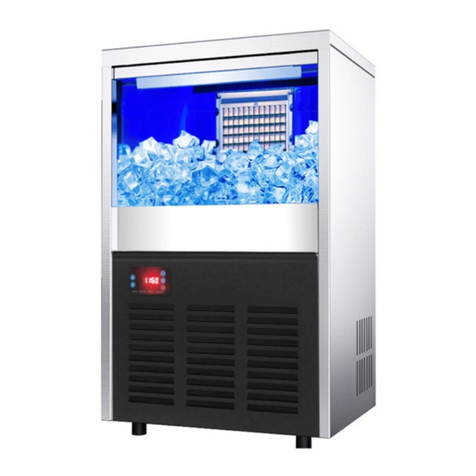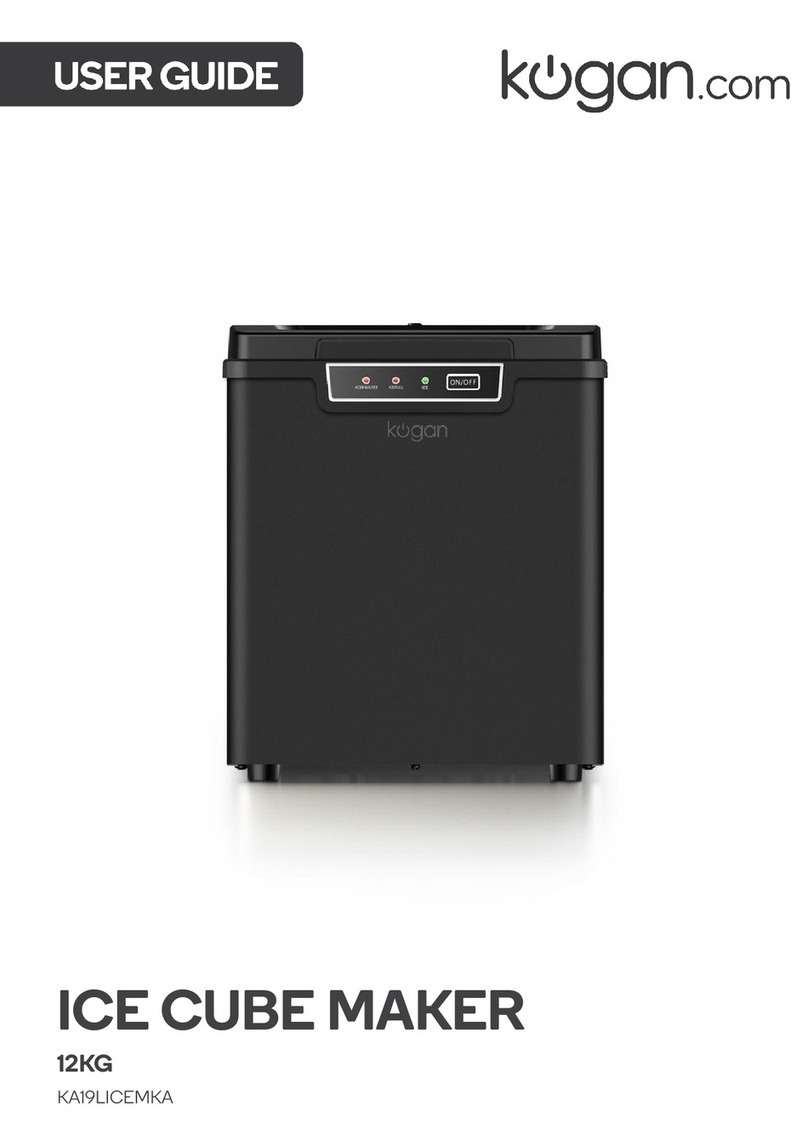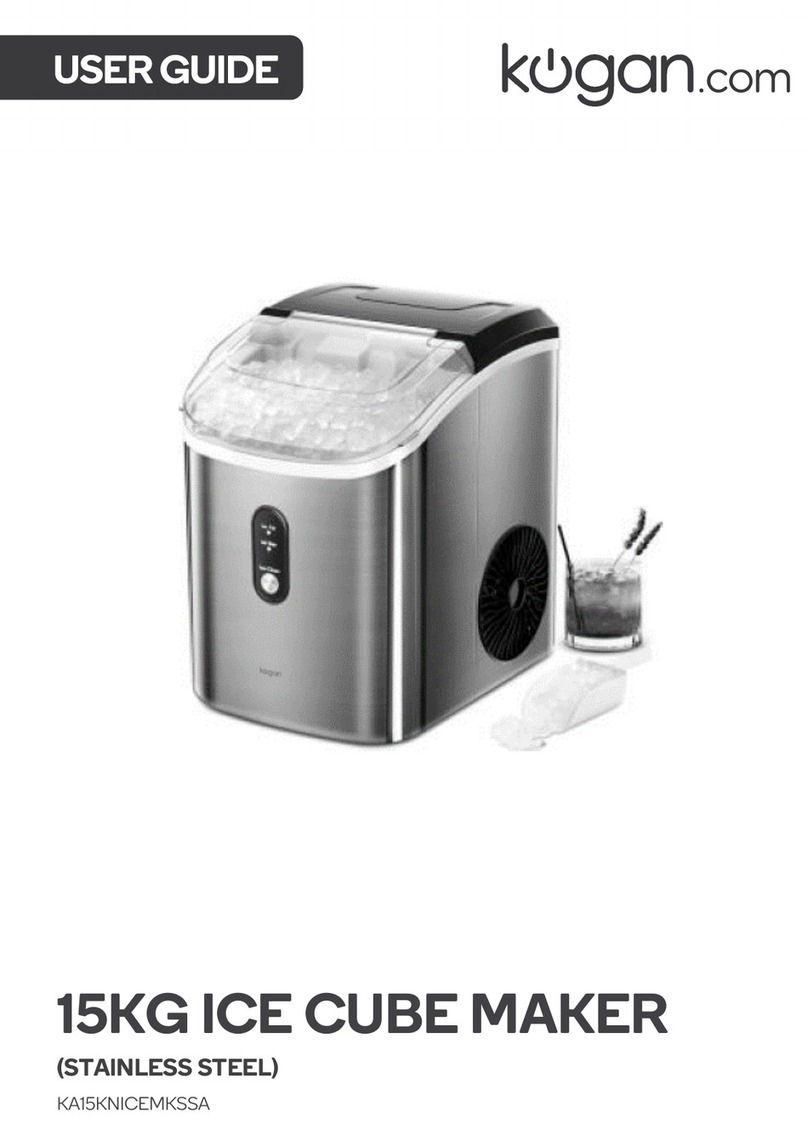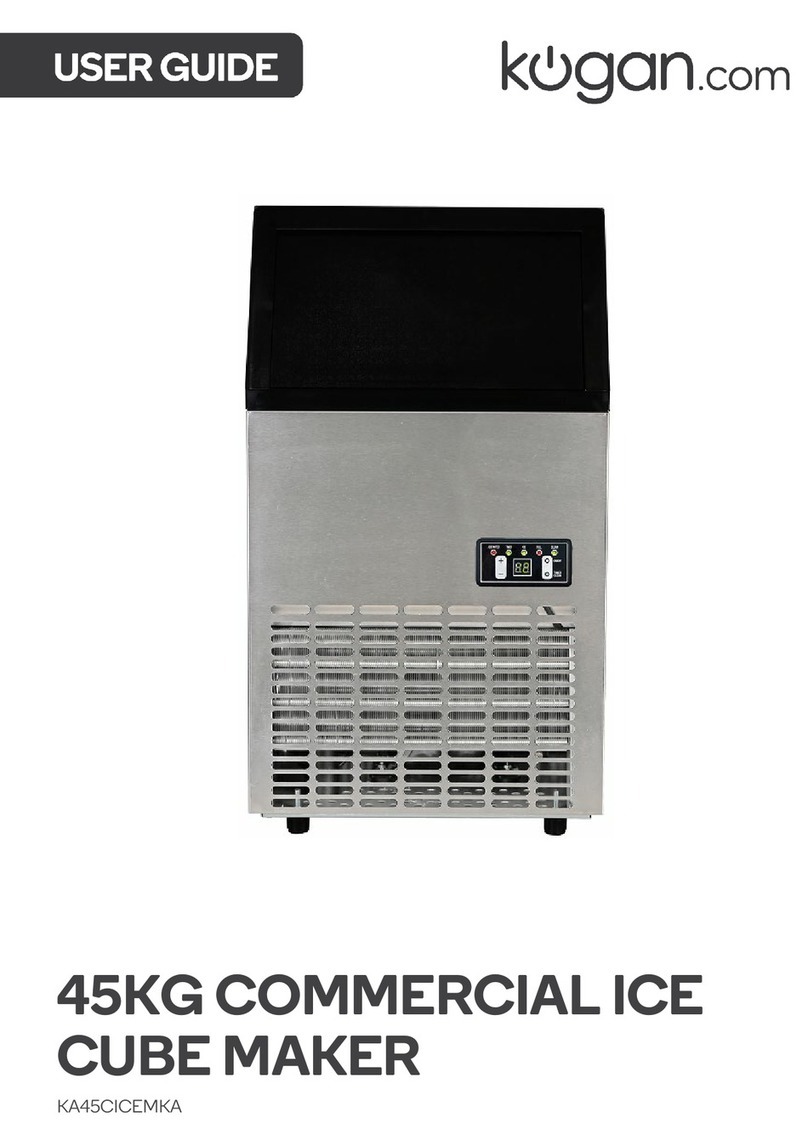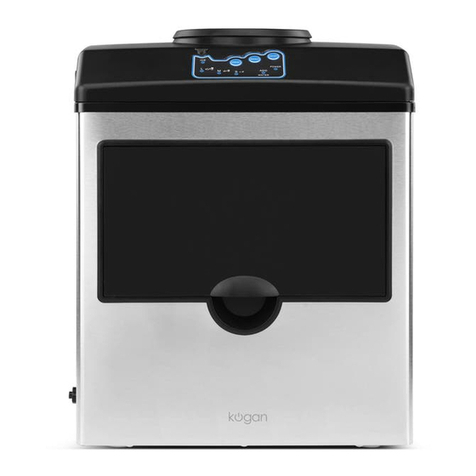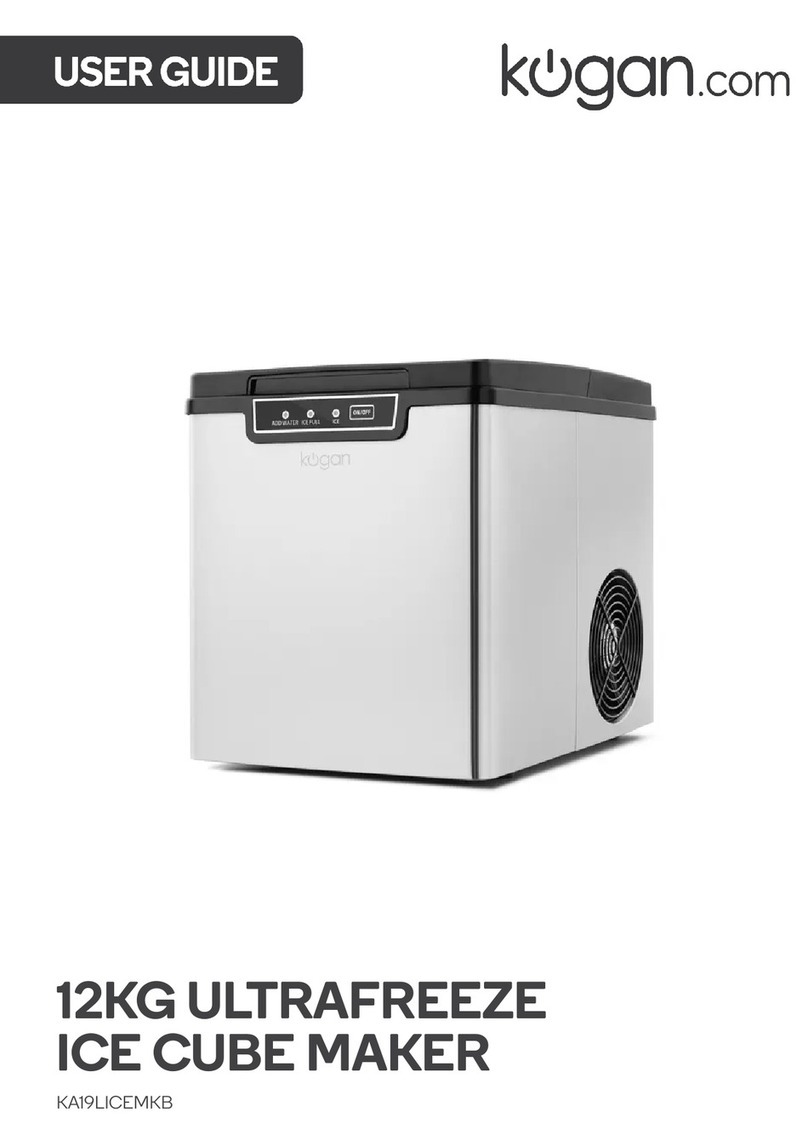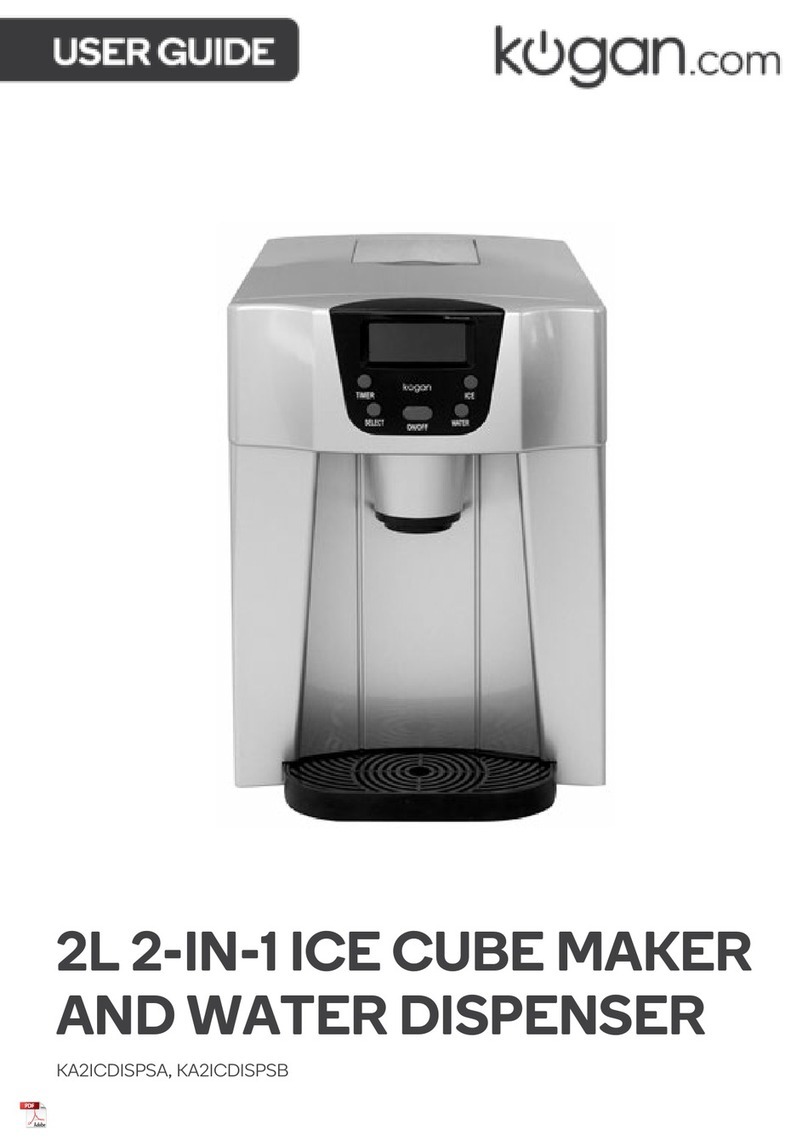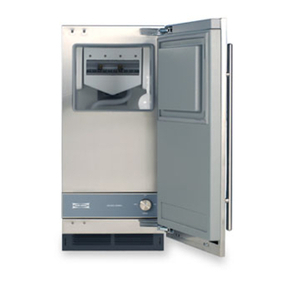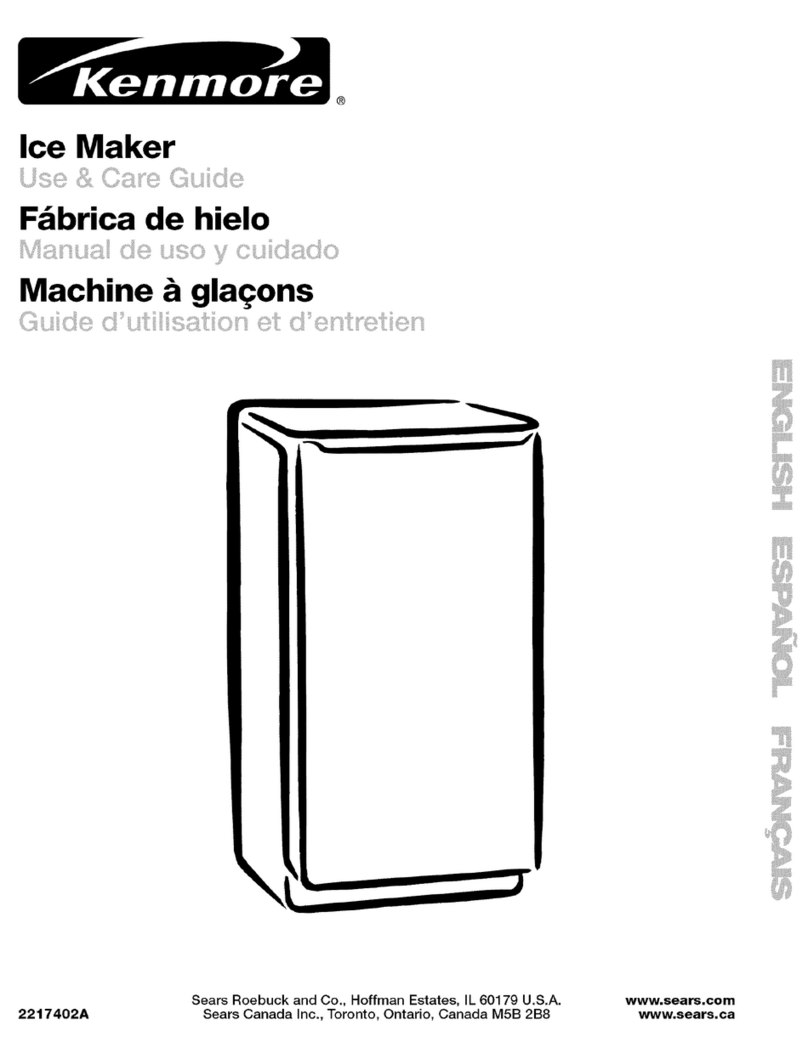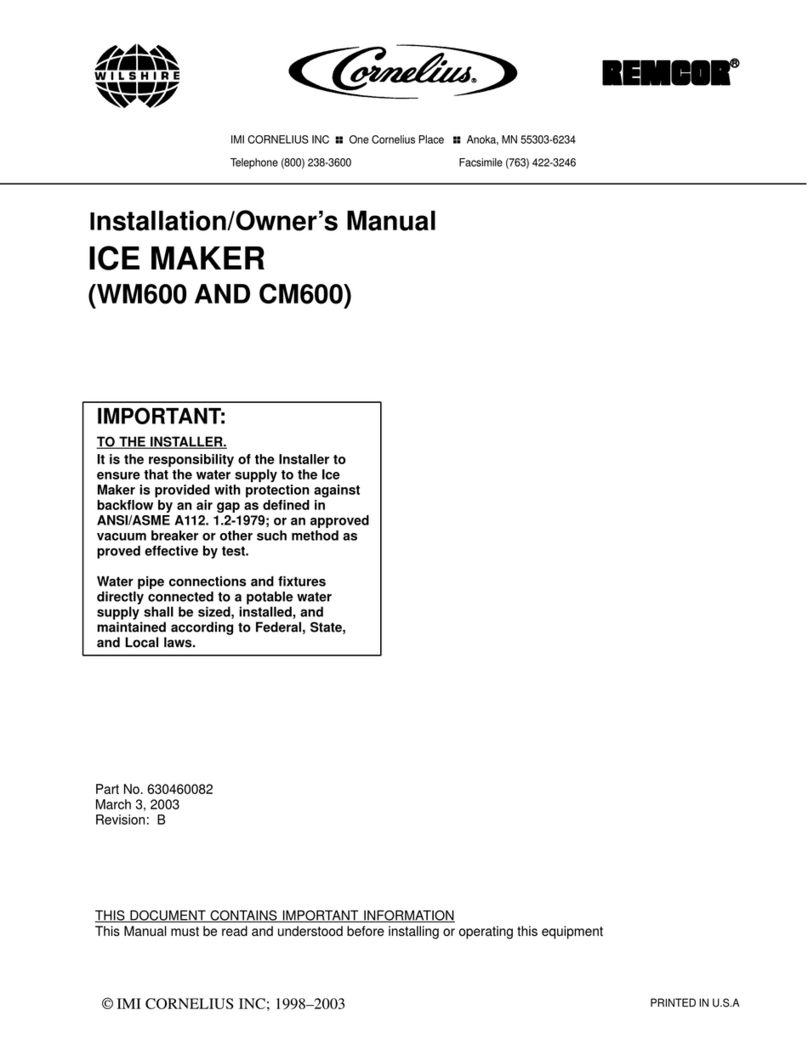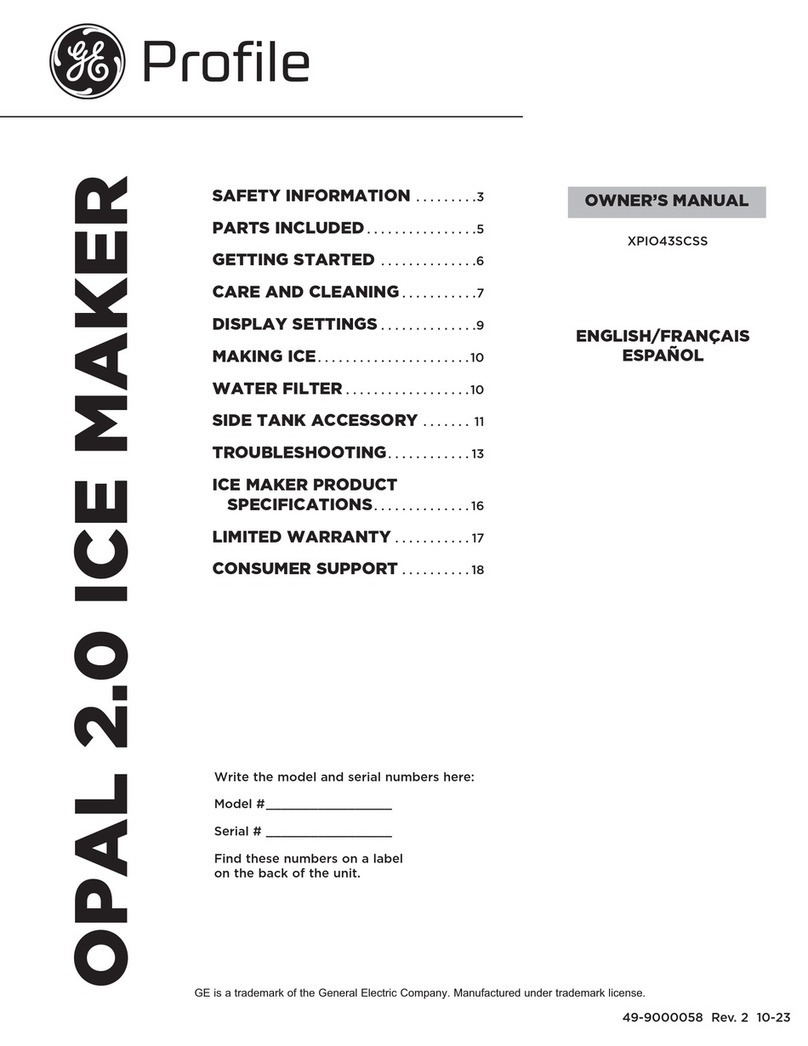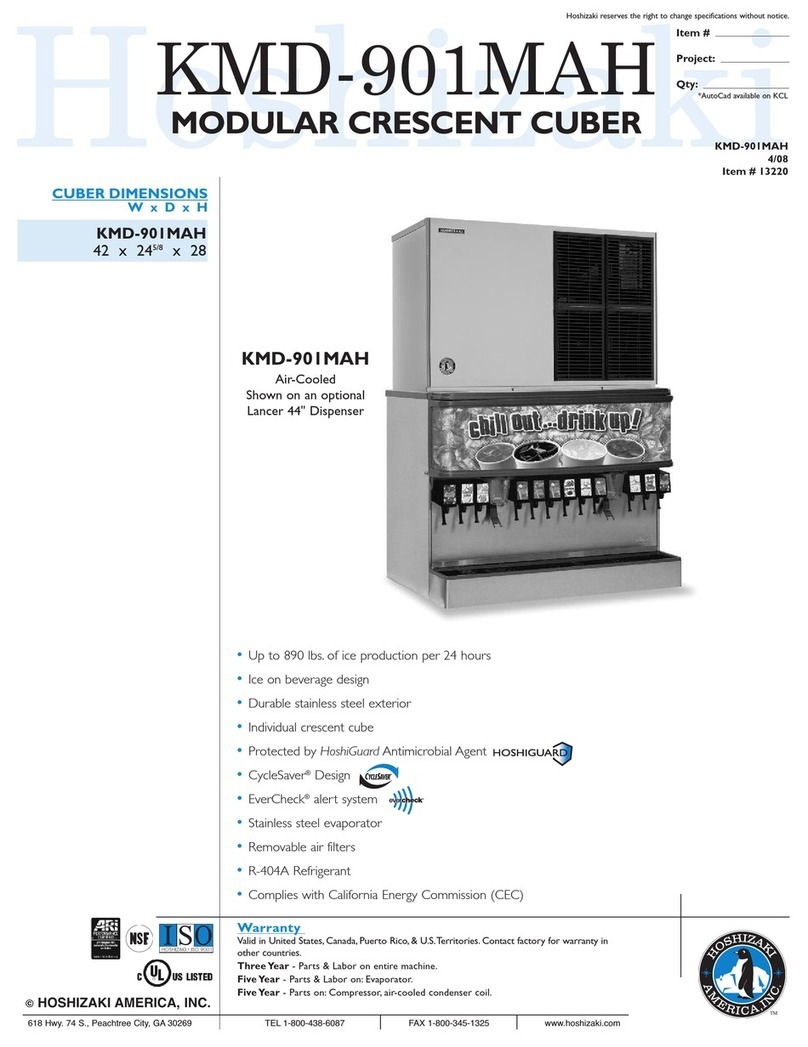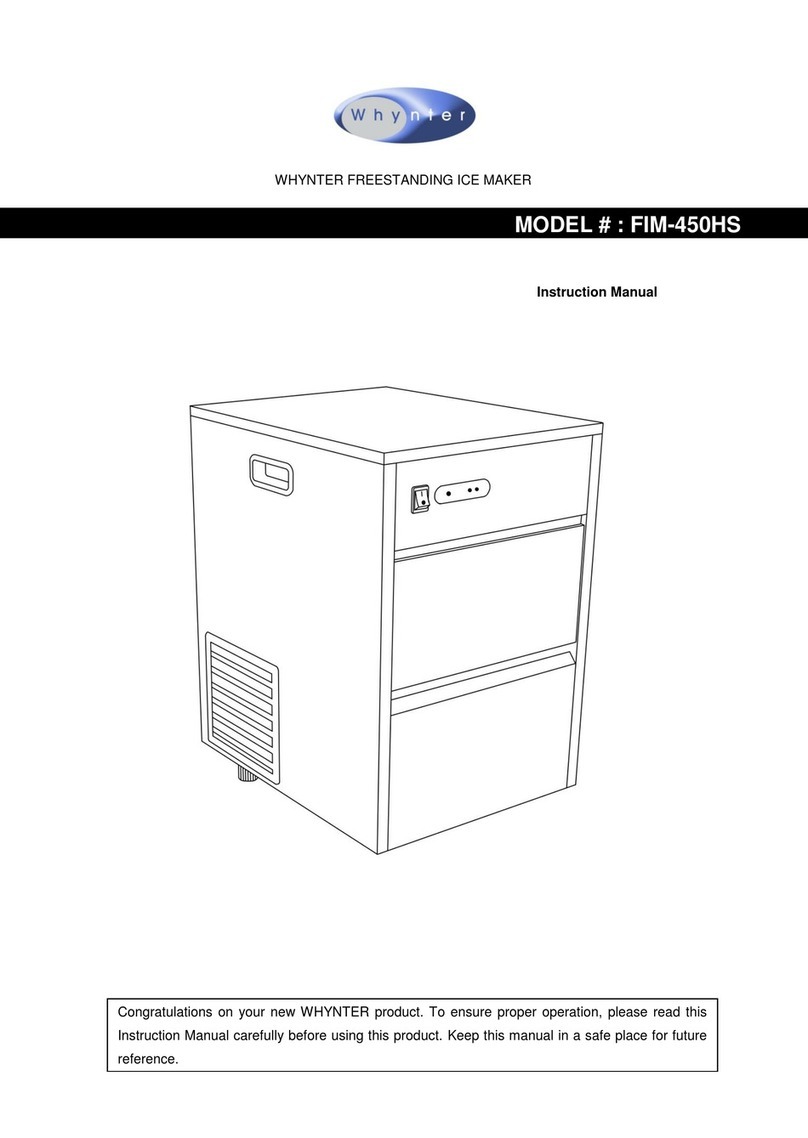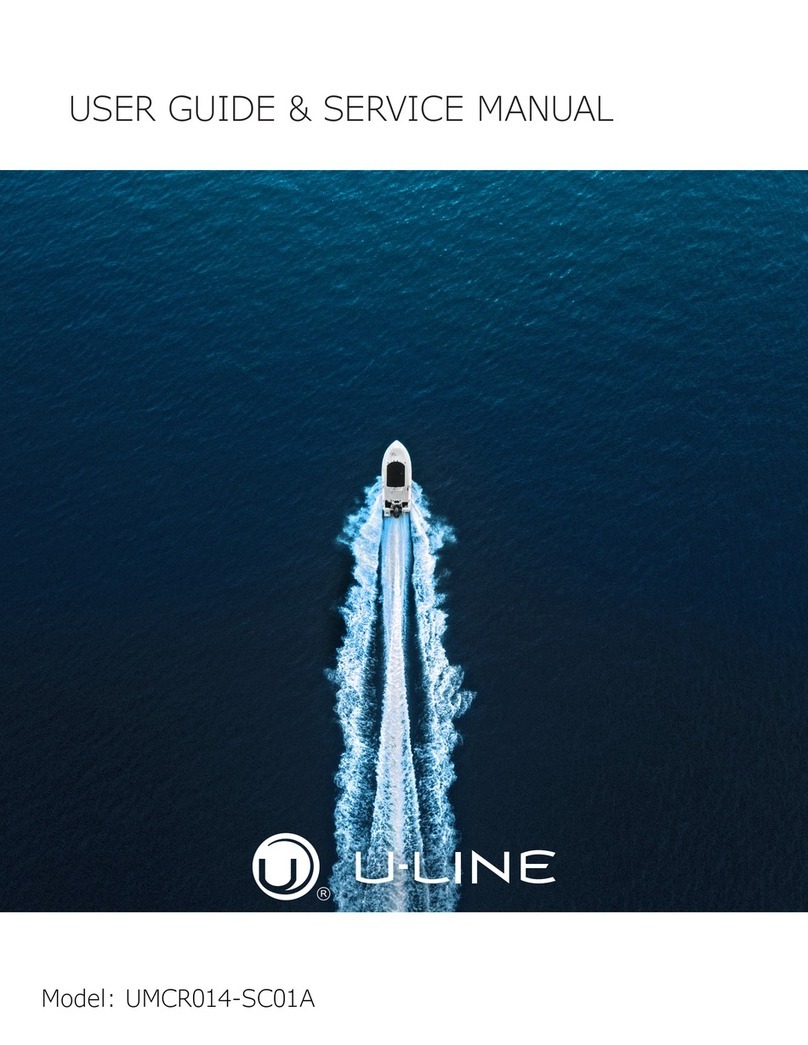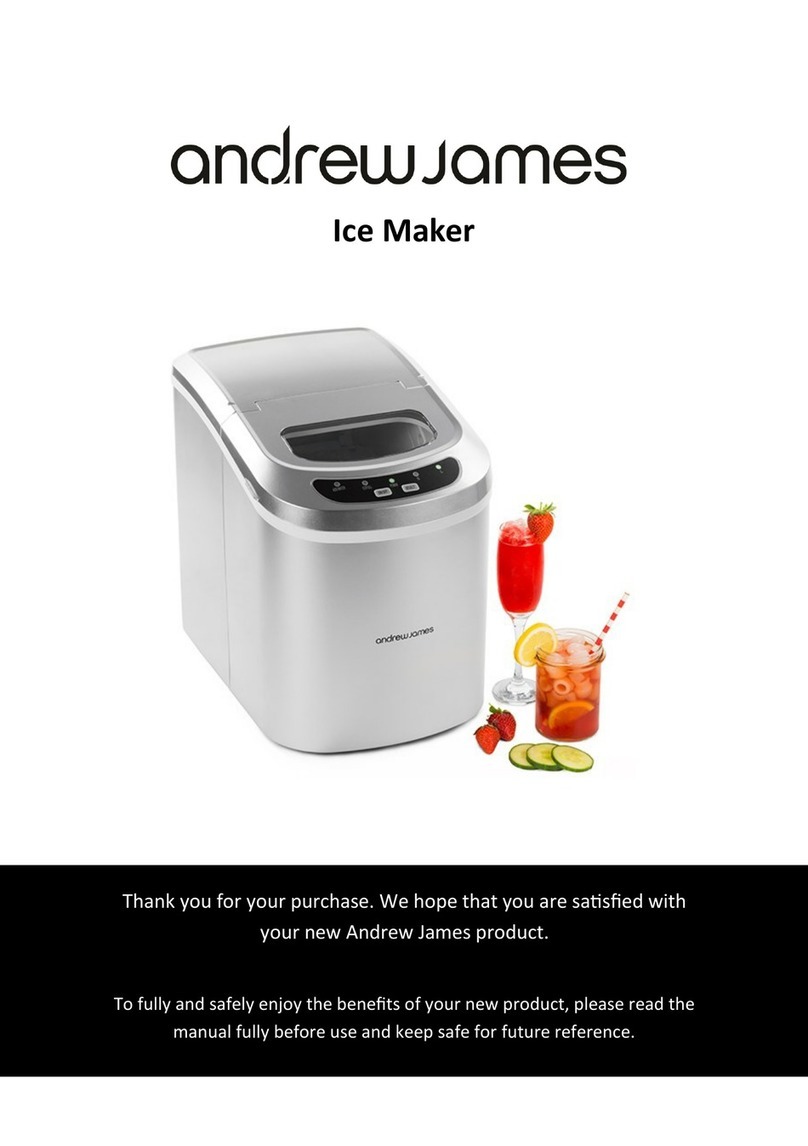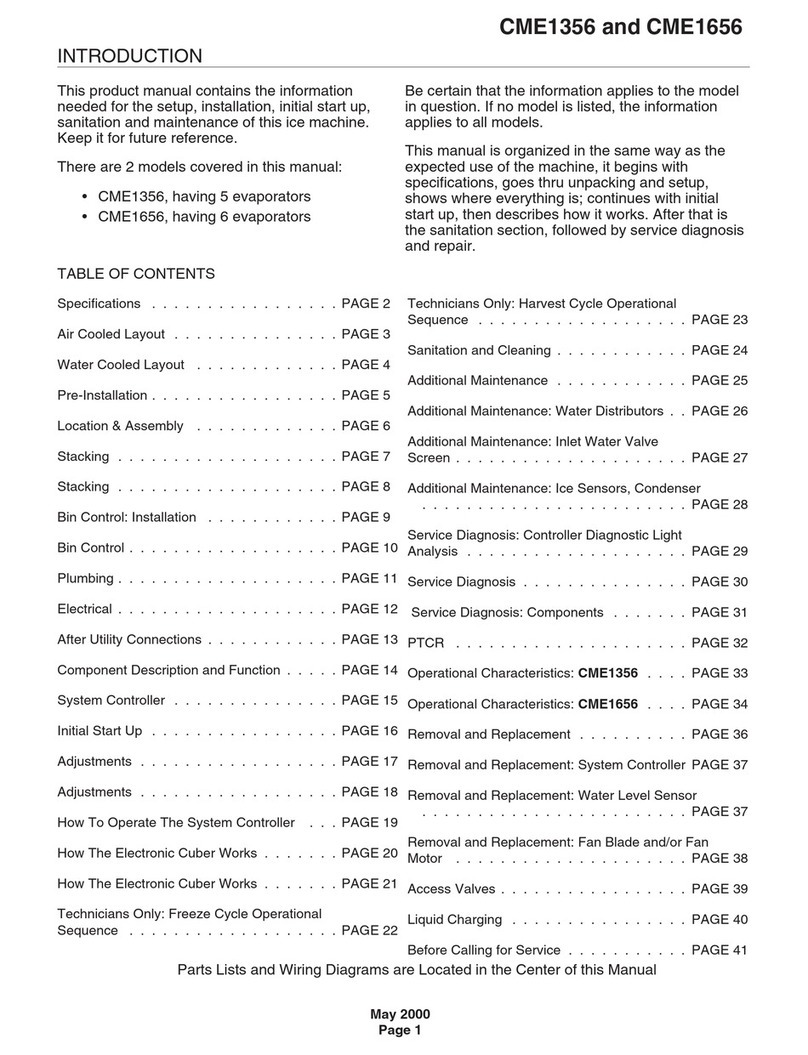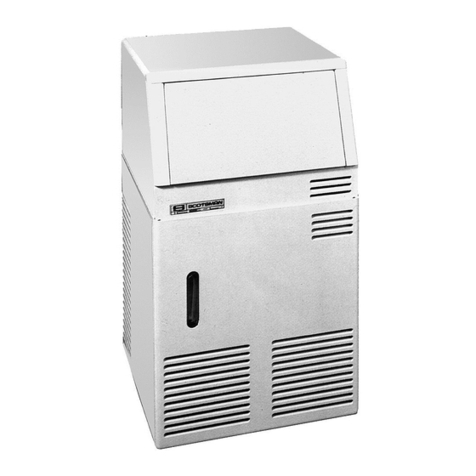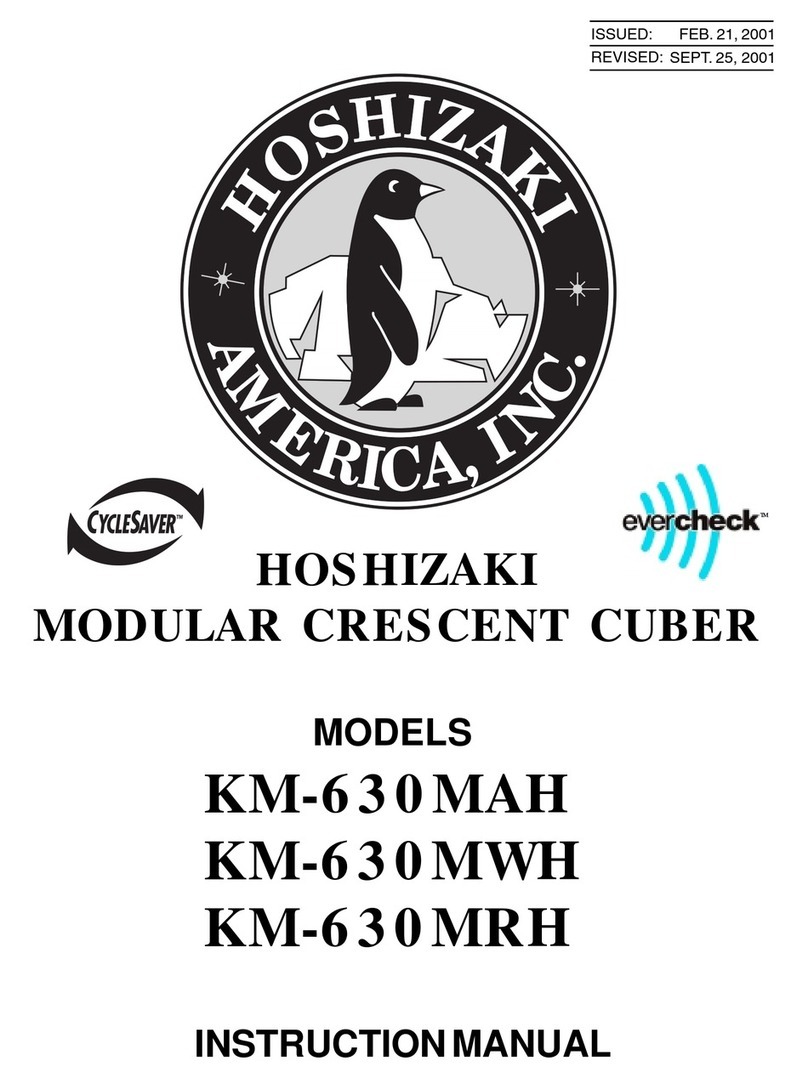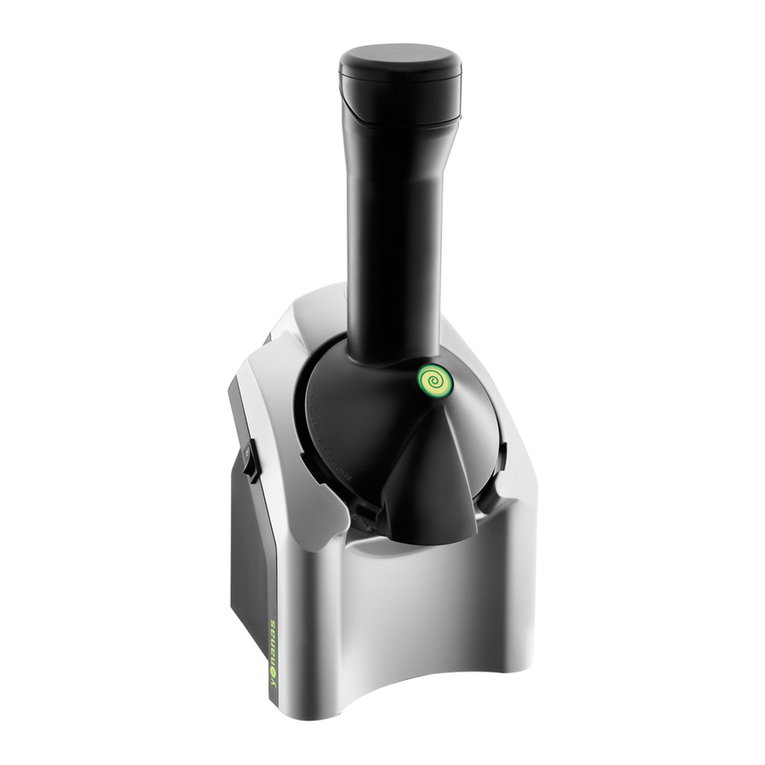
When using electrical appliances, basic safety precautions should be followed to reduce the
risk of fire, electric shock and injury to persons or property. Read and understand all
instructions before using any appliance.
•Use this appliance only for its intended purpose as described in this guide.
•This icemaker must be properly installed by the installation instructions before it is
used.
•This unit must be positioned so that the plug is accessible. Do not run the cord over
carpeting or other heat insulators. Do not cover the cord. Keep the cord away from
traffic areas and do not submerge in water. No other appliance should be plugged
into the same outlet and be sure that the plug is fully inserted into the receptacle.
•The use of an extension cord is not recommended as it may overheat and cause a
risk of fire.
•If the supply cord is damaged, it must be replaced by Kogan.com or its service
agent to avoid a hazard.
•Disconnect the mains plug from the supply socket when not in use for a long term,
where supply connection is via mains plug.
•Remove the power plug or disconnect from the mains before cleaning or
maintaining the appliance.
•Never unplug your unit by pulling on the power cord. Always grasp the plug firmly
and pull straight out from the outlet.
•Do not use this unit outdoors. Keep the unit away from direct sunlight and make
sure that there is at least 15 cm of space between each side of the unit and
surrounding walls. Keep all ventilation openings on and in the appliance clear of
obstruction.
•Do not tip over the unit, as this will cause abnormal noise and ice-cube production.
This may also cause serious water leakage from the unit.
•If the unit is brought in from outside during winter, allow a few hours for it to warm
up to room temperature before plugging it in.
•Do not use other liquid to make ice-cubes other than water.
Do not clean the ice maker with flammable fluids, as the fumes can create a fire hazard or
explosion.

